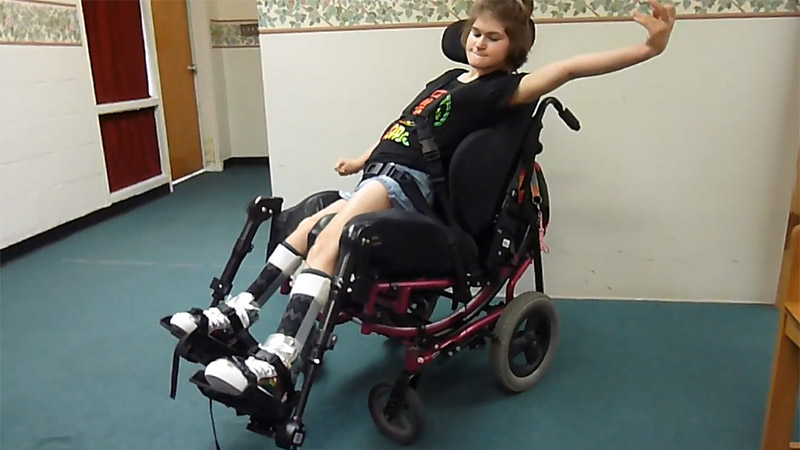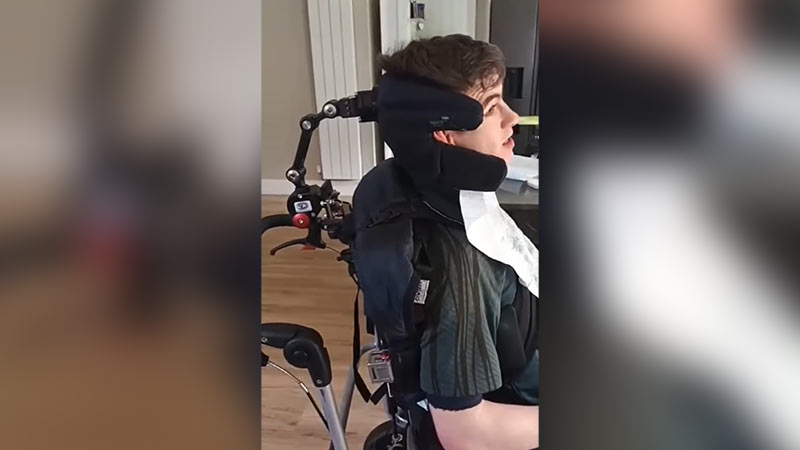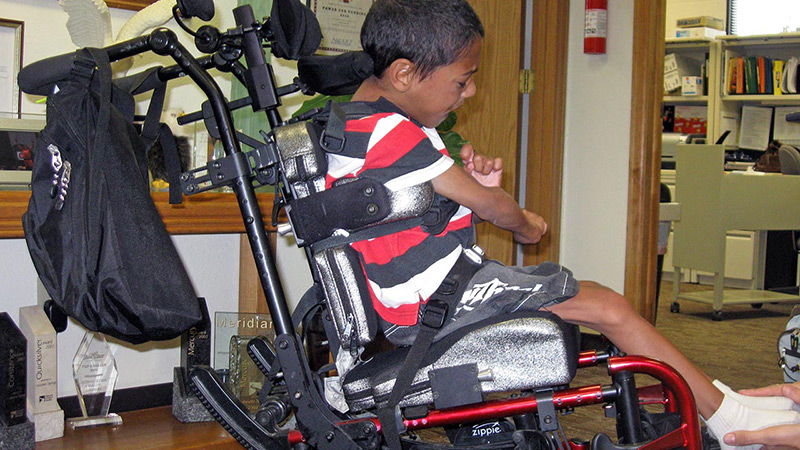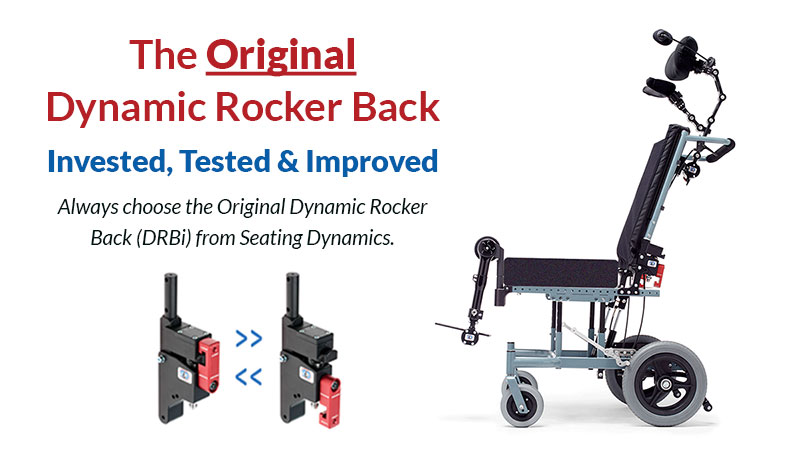Dynamic Seating for People with Cerebral Palsy
How can Dynamic Seating be beneficial for people with Cerebral Palsy? It can prevent equipment breakage, client injury, diffuse tone & provide movement.
Read MoreLochlann’s New Dynamic Head Support Diffuses His Strong Neck Extension and Rotation
Lochlann has strong extension and dystonia and also seeks out movement. A dynamic back and dynamic head support diffuse these forces and allow movement.
Read MoreHip Extension & Loss of Position in Wheelchair
This young man extends with significant force at his hips, causing him to elevate his pelvis off of the cushion. When he relaxes, his pelvis lands on the cushion in a posterior pelvic tilt.
Read MoreDynamic Stories – Clinician Interview: Missy Ball, PT, MT, ATP
Missy Ball is a retired physical therapist in Metairie, LA who has many years of experience in wheelchair seating and mobility, including Dynamic Seating (DS).
Read MoreEvaluation, Simulation, and Dynamic Seating Trials
Recently a therapist asked me how she could recommend Dynamic Seating components if she didn’t actually try these with a client. Great question! It is not typically realistic to conduct Dynamic Seating trials as one would need to place Dynamic Seating components on a client’s wheelchair for trial and often the frame would need to be modified to accept these components.
Read MoreClinical Indicators: Maintaining Posture by Providing Movement
Dynamic Seating has many clinical indicators, including reducing active client extension, preventing client pain and injury, preventing equipment breakage, providing movement, and improving postural control, stability, and function.
Read MoreClinician Interview: Elaine T. Lu PT, MHEd, ATP
Elaine Lu is a physical therapist in Salt Lake City, UT who has many years of experience in wheelchair seating and mobility, including Dynamic Seating (DS).
Read MoreFree CEU: Dynamic Seating and Power Wheelchairs
Dynamic Seating can be used successfully on a power wheelchair, though there are unique parameters which must be considered.
Read MoreEnsure Your Dynamic Back is the Original, Genuine Seating Dynamics Product
Another manufacturer offers a nearly identical version of an old model of the original Dynamic Rocker Back (DRBi) from Seating Dynamics. Make sure you know what your product is.
Read MoreGrowing Up in a Wheelchair. Will Dynamic Seating Grow too?
I mainly work in pediatrics and so growth is always a concern. When recommending equipment, whether it be a bath seat or a wheelchair frame, I need to know how much growth is available in order to ensure the item will continue to meet a child’s needs for as long as possible.
Read More









